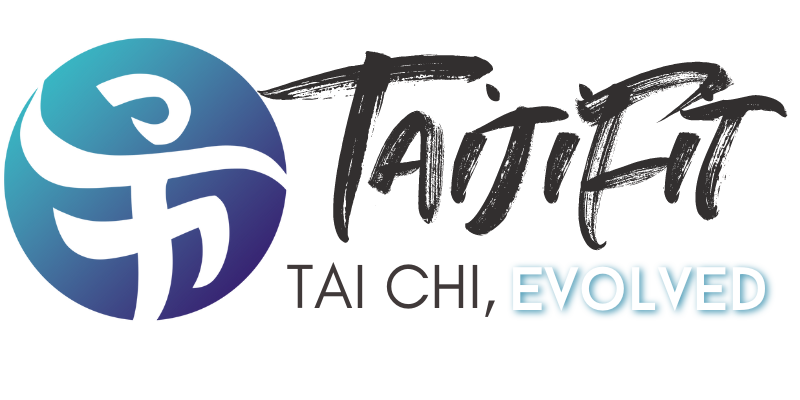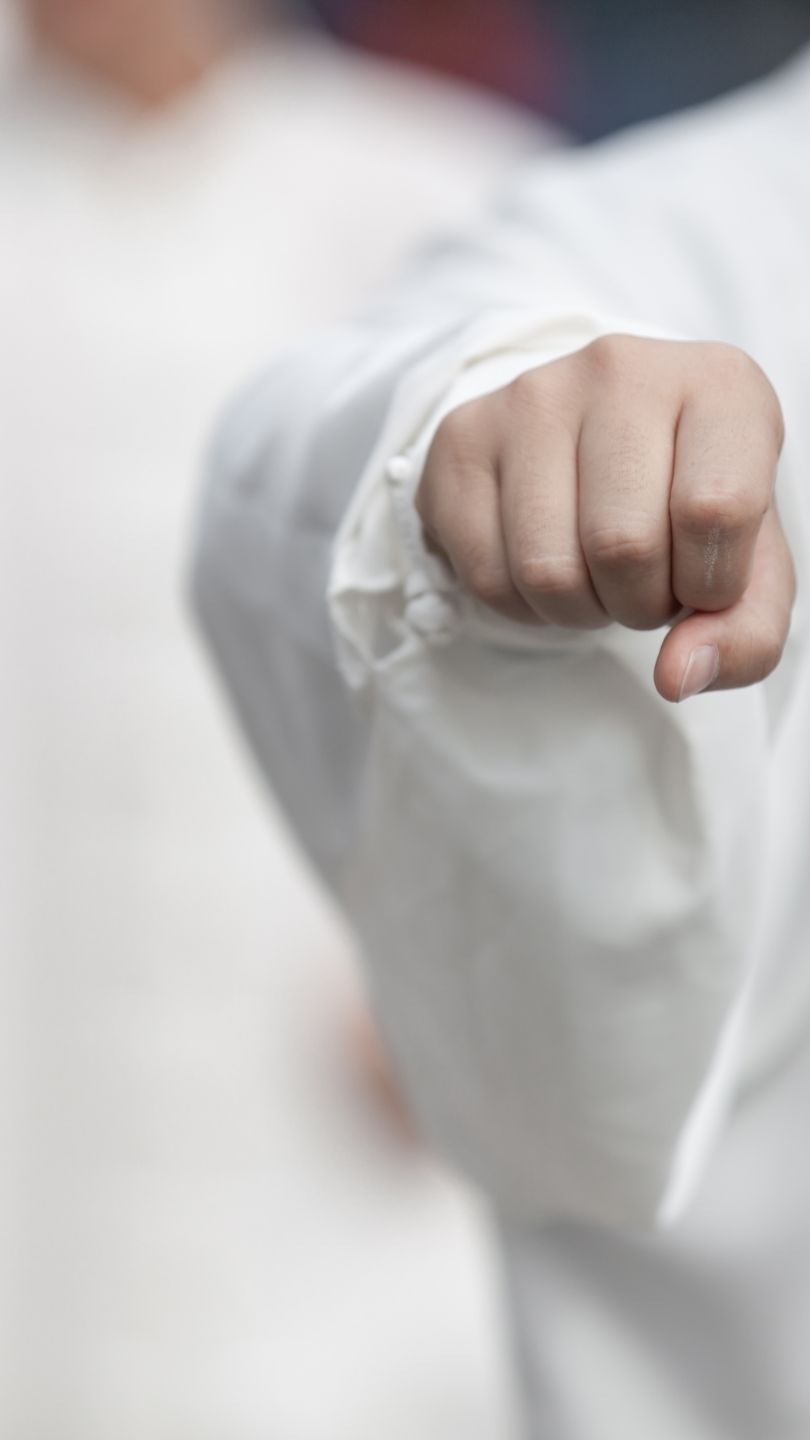Unexpected Fact #1: T’ai Chi is a martial art
The story of Chen Wan-ting tells us that Tai Chi has its roots as a martial art, but it’s a very special kind of martial art distinct from most of the hundreds of other styles of Chinese kung fu.
Tai Chi is what’s known as an ‘internal’ martial art. Internal means that the power of the art is found on the inside, rather than on the outside. Don’t get me wrong, all of the movements have very specific self-defense applications. Tai Chi is much like aikido, a martial art that utilizes the application of leverage.
The Tai Chi modes of practice, like the solo choreographed routines and the interactive sensitivity training known as ‘pushing hands’, teach you how to place yourself in an advantageous position in which you can exert leverage on another without giving them an opportunity to exert leverage on you. In contrast to most other martial arts, Tai Chi has only a few kicks and punches. Most of the techniques are deflections, twists, grabs, and throws.
The internal dimension of Tai Chi has two important aspects.
First, Tai Chi is a strong method for cultivating superior circulation of Qi energy. According to the Tai Chi principles, the reason this is important is that a punch powered by your muscles can leave a bruise or even knock you out, while a punch powered with your Qi can kill you. Additionally, the cultivation of Qi will lead to long life and superior health.
But the second aspect of ‘internal’ is even more interesting—and for me it is the most important aspect. Internal also means the cultivation of your character. One of the essential Tai Chi principles states, ”inner and outer must mirror each other.“ In other words, what’s the point of being a highly skilled fighter if you're a terrible person with no honor, morals or ethics?
Unexpected Fact #2: Tai Chi may be better than therapy
So how does one become a better person through the practice of Tai Chi? The answers to this question reveals the most profound aspect of Tai Chi. Tai Chi is actually a form of moving meditation whose purpose is to purge oneself of all the attitudes and behaviors that we might call ‘the ego’. Every time we practice our Tai Chi forms, we are engaging in what’s known as ‘the kung fu of getting to know oneself.’
Self reflection leads to Self awareness. Self awareness leads to Self confidence and Self confidence leads to compassion—for yourself and others.
Unexpected Fact #3: The Core Principles of Tai Chi
Another unexpected fact about Tai Chi is that it is guided by a series of principles, not by rules.
The difference is that rules are prescriptive, while principles are descriptive. Rules tell you what you must do in every situation, principles tell you what you might do in a certain situation if you want to achieve a certain result.
One of the primary principles of Tai Chi is the principle of softness overcoming hardness. This principle says that ultimately strength and hardness to softness and flexibility.
The saying goes: In the hurricane, pine trees crack while bamboo merely bends.
Another core principle is called ‘Flow,’ which is a way of moving that is continuous (not stopping and starting), harmonious (always feels balanced and easy), and synergistic (as much as possible using all your parts).
Flow doesn’t just refer to your physical movements, by the way. Your thoughts can flow, your breath and of course your Qi—they all can Flow.
In the Tai Chi Classics, it is written that in some styles of martial arts you can see every punch and kick start and stop. But when you can see this, then you also know that the Qi also starts and stops.
But the #1 principle is the harmony of Yin and Yang—the balance of basic forces in the world. Every extended movement must return, and every gathering-in movement must eventually go out again. These principles echo the rhythm of nature.
These core principles were originally an oral tradition, passed down from Master to Disciple. But eventually they were written down in a book called the Tai Chi Ching—the Tai Chi Classic. It’s a collection of short essays and verses written by the Tai Chi Masters of the past. Or so they say!
Unexpected Fact #4: There are Different Styles of Tai Chi
Just like the many flavors of fine cuisine, Tai Chi presents a variety of styles: Yang, Chen, Wu, Hao, and Sun. Each one, with its unique characteristics, contributes to the rich banquet that is Tai Chi. Each of these different styles was named after a different Chinese individual who founded the style, and together they are called The Five Families.
The Yang style, with its gentle flow, contrasts with the dynamic energy of the Chen style.
Wu style differs from the Yang style with a more upright, yet inclined posture.
Sun style is the youngest of the Five Families, dating from the turn of the 20th century, and combines basic movements of Tai Chi with Xing Yi and Bagua.
Yet, each style, no matter how different in technique and form, shares the same fundamental Tai Chi essence. Every style of Tai Chi teaches a series of short choreographed routines, called ‘Forms.’
They range in length from a half dozen movements to more than 100. The standard Tai Chi curriculum consists of memorizing one form after another until you’ve mastered all the routines in that style. They are done empty-handed, or while wielding a variety of weapons like swords, cudgels, or spears.
Of course, the newest flavor of Tai Chi is TaijiFit. It’s not a new style, per se, but rather a new way of learning Tai Chi that makes it more accessible and irresistible. It draws movements from all five families without favoring any particular one. There are no routines to memorize; participants simply follow the directions of a leader until they find themselves experiencing the effortless grace of being in Flow.
Unexpected Fact #5: Tai Chi as a Holistic Practice
Some people love to read and broaden their thoughts about the world we live in. Others like to travel and immerse themselves in other cultures.
And still others focus on their health and fitness, taking immaculate care of the temple that houses their Soul.
For me, Tai Chi has been all of those things. If the definition of a holistic practice is one that draws all of their parts and pieces together into a whole, then Tai Chi has done that for me. It started as a curiosity, because the first person that ever asked me, “What is Tai Chi?” was myself!
After a while, it became a regular practice. I think it certainly has kept me healthy and free from most of the aches, pains and diseases that are common among people my age. And after more than 40 years of study, I think of Tai Chi as a part of me.
Tai Chi is not just a slow dance that old folks do in the park. It’s so much more. It’s the rhythm of Nature itself. Yin and yang. Hard and soft. Sunrise and sunset.

